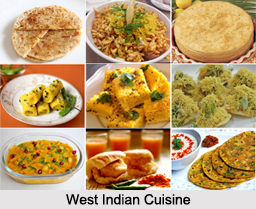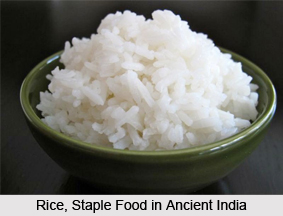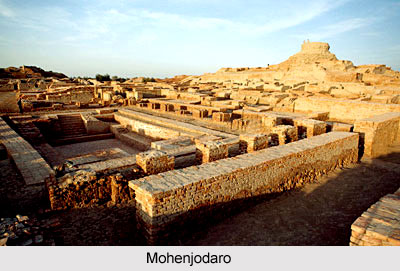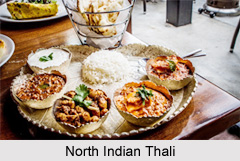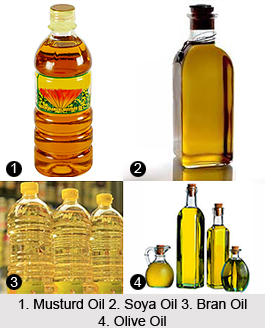 Cooking oils are the most important things that are liberally used for making each and every type of dishes in India. The two basic fats that are used in Indian cooking are butter, known as "asli ghee", and vegetable shortening, known as "vanaspati (vegetable) ghee". There are several different kinds of vegetable oils that are used in Indian cooking, the popular ones being sesame, peanut, mustard, coconut, corn and sunflower. Butter and shortening are generally used for all-purpose cooking. Oils are reserved for frying, deep frying and pickling. Animal fats, such as lard and suet, are never used as a cooking medium in India because of the religious convictions of the Hindus and Muslims. They are also unacceptable to vegetarians since they are considered a meat product.
Cooking oils are the most important things that are liberally used for making each and every type of dishes in India. The two basic fats that are used in Indian cooking are butter, known as "asli ghee", and vegetable shortening, known as "vanaspati (vegetable) ghee". There are several different kinds of vegetable oils that are used in Indian cooking, the popular ones being sesame, peanut, mustard, coconut, corn and sunflower. Butter and shortening are generally used for all-purpose cooking. Oils are reserved for frying, deep frying and pickling. Animal fats, such as lard and suet, are never used as a cooking medium in India because of the religious convictions of the Hindus and Muslims. They are also unacceptable to vegetarians since they are considered a meat product.
Until recently, asli or pure ghee was the only cooking medium used in North India. However, nowadays shortening and oils are also used in place of ghee. Indian vegetable shortening or vanaspati ghee has a light lemon colour, grainy texture, and a faint nutty-lemon aroma. It is almost identical in appearance and flavour to pure ghee. Indians have used ghee for centuries and would never accept a substitute unless it reproduced the good taste of butter as closely as possible. Therefore, Indian vegetable shortening, a product of highly saturated oils such as coconut, cotton¬seed, rapeseed and palm, is not only hydrogenated, but is also specially processed to look, smell and taste almost like ghee.
The growing awareness of calorie maintenance and the possible harm in consuming excessive quantities of highly saturated fats lead many Indians to cook food in substi¬tuted unsaturated oils. For vegetarians, ghee is the primary source of nutrition. The Brahmins consider it brain food with supernatural powers, and attribute the development of one"s intelligence to it. Even today, young Hindu children, particularly males, are given a spoonful of ghee every day to sharpen their intelligence. The old Brahmin ritual of feeding a newborn infant a spoonful of ghee within minutes of his birth is still followed by all Indians. Kashmiri cooking, known for its delicate preparations and haunting flavours, uses ghee as one of its chief ingredients.
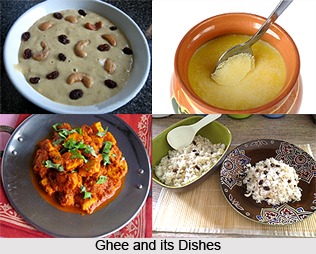 Many parts of India have used oil in general cooking for centuries, except for flavouring legumes and desserts. In the southern and southwestern regions, many foods are traditionally cooked in sesame or coconut oil, and mustard oil is used in the central and eastern regions of India. Sometimes, light vegetable oils as sunflower and soybean are also used for cooking Indian dishes. In a few Mughal and Kashmiri dishes where ghee is one of the primary flavouring elements and for these dishes nothing but ghee should be used. For some preparations, peanut or corn oil is also used. Even, in some regions, specific oils are used for cooking some regional dishes like light sesame oil is used in Sambaar in the South, and mustard oil in Vendaloo in Goa in the Southwest.
Many parts of India have used oil in general cooking for centuries, except for flavouring legumes and desserts. In the southern and southwestern regions, many foods are traditionally cooked in sesame or coconut oil, and mustard oil is used in the central and eastern regions of India. Sometimes, light vegetable oils as sunflower and soybean are also used for cooking Indian dishes. In a few Mughal and Kashmiri dishes where ghee is one of the primary flavouring elements and for these dishes nothing but ghee should be used. For some preparations, peanut or corn oil is also used. Even, in some regions, specific oils are used for cooking some regional dishes like light sesame oil is used in Sambaar in the South, and mustard oil in Vendaloo in Goa in the Southwest.
Cooking oils are of different types and a good variety of cooking oils are available in the local market, which are extensively used in cooking Indian foods. Recently, due to the changing food habit many vegetable and low calorie cooking oils are coming in market that are good for heart and for balancing human digestive system.
